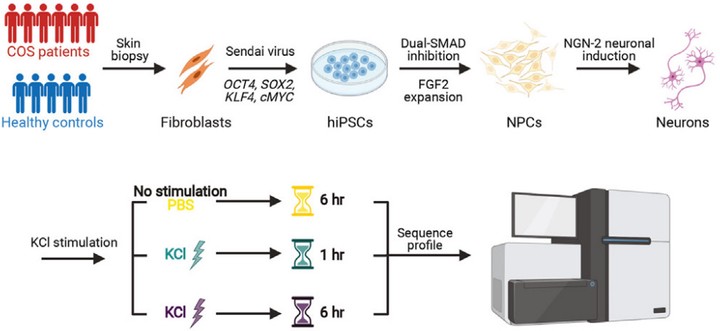Activity-Dependent Transcriptional Program in NGN2+ Neurons Enriched for Genetic Risk for Brain-Related Disorders

Abstract
Background - Converging evidence from large-scale genetic and postmortem studies highlights the role of aberrant neurotransmission and genetic regulation in brain-related disorders. However, identifying neuronal activity-regulated transcriptional programs in the human brain and understanding how changes contribute to disease remain challenging. Methods - To better understand how the activity-dependent regulome contributes to risk for brain-related disorders, we profiled the transcriptomic and epigenomic changes following neuronal depolarization in human induced pluripotent stem cell-derived glutamatergic neurons (NGN2) from 6 patients with schizophrenia and 5 control participants. Multiomic data integration associated global patterns of chromatin accessibility with gene expression and identified enhancer-promoter interactions in glutamatergic neurons. Within 1 hour of potassium chloride-induced depolarization, independent of diagnosis, glutamatergic neurons displayed substantial activity-dependent changes in the expression of genes regulating synaptic function. Depolarization-induced changes in the regulome revealed significant heritability enrichment for schizophrenia and Parkinson’s disease, adding to mounting evidence that sequence variation within activation-dependent regulatory elements contributes to the genetic risk for brain-related disorders. Gene coexpression network analysis elucidated interactions among activity-dependent and disease-associated genes and pointed to a key driver (NAV3) that interacted with multiple genes involved in axon guidance. Conclusions - Overall, we demonstrated that deciphering the activity-dependent regulome in glutamatergic neurons reveals novel targets for advanced diagnosis and therapy.